Labels
INTRODUCTION OF BIOLOGY
Basic Concepts and Terminologies of Biology
The Meaning of Basic Biological Concepts and Terminologies
Explain the meaning of basic biological concepts and terminologies
Biology
Biology is derived from two Greek words, that is, bios which means life and logos or logia which means study or knowledge.
So biology can be defined as a branch of science which deals with the study of life. The term biology can also be defined as a branch of science which deals with the study of living things or organisms.
Biologist
A person specialized in the study of biology
Life
Life means being alive or existing. Something is alive or existing if it possesses life processes. The life processes are growth, movement or locomotion, respiration, excretion, reproduction, sensitivity and nutrition.
Organism
Organism is anything which has life. It is the other name of a living thing.Organisms are made up of cells.
Cell
A cell is a basic unit of living things. The cell has three main parts, cell membrane, cytoplasm and nucleus. Cells which make up plants are called plant cells and those which make up animals are called animal cells.
Some organisms are made up of one cell. They are called unicellular or single-celled organisms e.g. amoeba, euglena and yeast. Some organisms are made up of many cells, they are called multi cellular organisms e.g. animals, plants, and most fungi.
The Characteristics of Living Things
Outline the characteristics of living things
Movement/locomotion
All living organisms are capable of movement. Movement is the change of position of the whole organism or just part of an organism. For animals and unicellular organisms the movement is of the whole body. This is known as locomotion. Most animals move about using legs, wings or fins. Unicellular organisms such as amoeba, paramecium and euglena use the locomotory structures pseudopodia, cilia and flagella respectively.
In plants only part of it may move towards different factors such as light, water, gravity etc. They move by growing. Their roots grow down in the soil and their shoots grow up into the air or towards a source of light.
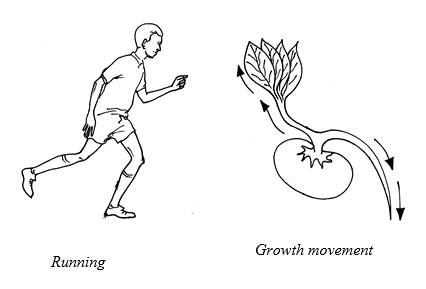
Irritability (sensitivity)
Irritability is the ability of an organism to respond to a stimulus. Stimulus (plural; stimuli) is anything that causes a response in an organism.
Examples of stimuli include: an alarm clock, a smell of breakfast cooking and a fly landing on your skin.
All living things are sensitive to certain changes in their surroundings, that is, they are aware of what is happening around them. This is possible because they have special organs known as sense organs by which they detect these changes.
Examples of sense organs include: eyes for vision (sight); skin for temperature, touch, pressure detection; tongue for tasting; nose for smelling; and ears for hearing and body balance.
Plants do not have sense organs but are still able to detect and respond to things like gravity, water and light.
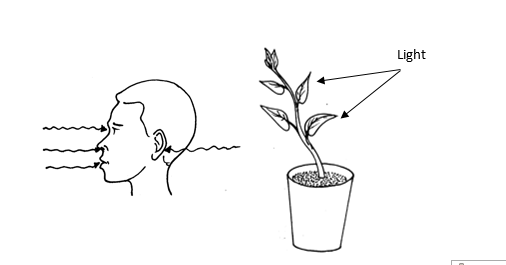
Feeding (Nutrition)
All living things need food to provide energy for such activities such as growth, repair and health.
Animals get their food by eating other living things or food materials that were once living things. Herbivores (e.g. rabbits) eat plants, carnivores (e.g. lions) eat other animals, and omnivores (e.g. humans) eat animals and plants. Plants make their own food through the process called photosynthesis.
The process of taking in food, synthesizing it, digesting and oxidizing it to release energy or build the body is called nutrition.
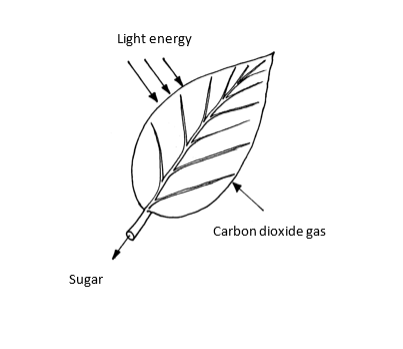
Respiration
Respiration is the breaking down of food materials within cells to release energy.
Respiration usually involves the use of oxygen. All living things need energy for movement, growth and development, and functioning of body organs.

Excretion
All living things produce wastes such as carbon dioxide, water, urea, ammonia etc.. Some of these chemicals if left to accumulate in the cells would seriously poison the living organism hence they need to be removed. The process of removing metabolic waste products from the body of living organisms is called excretion.
Waste products are removed from the body by excretory organs such skin, kidneys, lungs and liver.
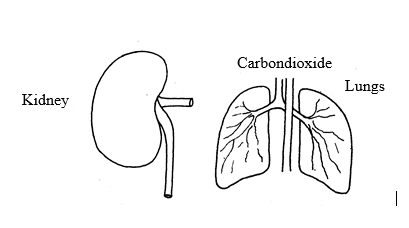
Reproduction
Reproduction is the process by which living things produce new individuals of their kind. All living things reproduce, to replace organisms lost by death. If a group of organisms does not reproduce fast enough to replace those which die, the group becomes extinct. Reproduction ensures continuation of life when parent generation dies.
Human beings bear babies; birds hatch chicks; and plants produce seedlings as new organisms, which eventually grow to mature organisms to replace those lost by deaths.
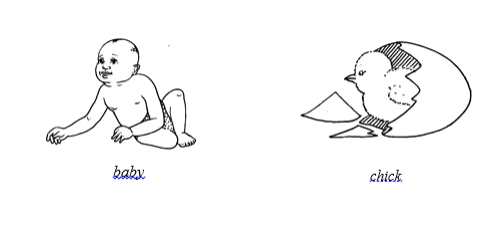
Growth
Growth is defined as an irreversible (permanent) increase in size and dry weight of an organism involving differentiation. All living things need food in order to grow and build up their bodies.
Animals grow until they reach certain adult size, but most plants can grow continuously throughout their lives.
Examples of growth in living things
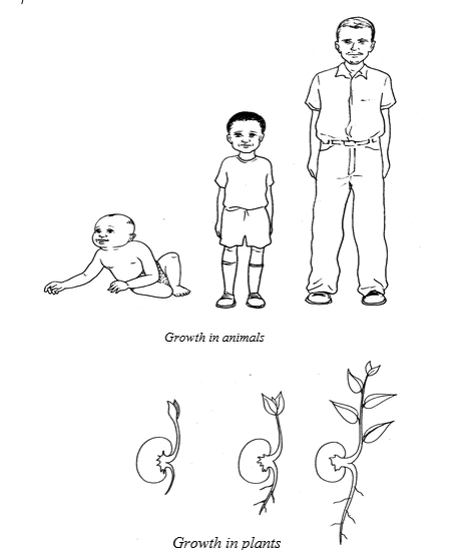
Example 1
Examples of living things
Fucus (bladderwrack)
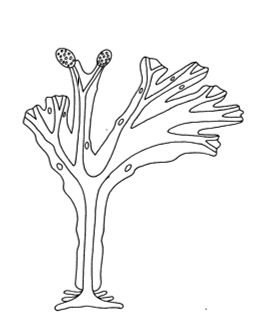
Streptococci
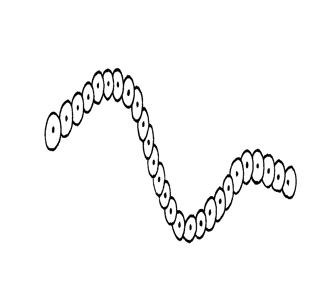
Diplococci
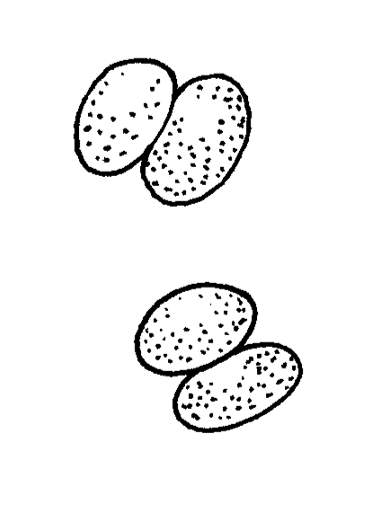
Streptobacilli
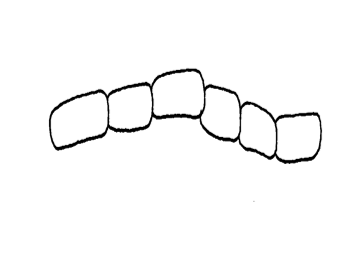
Grass snake
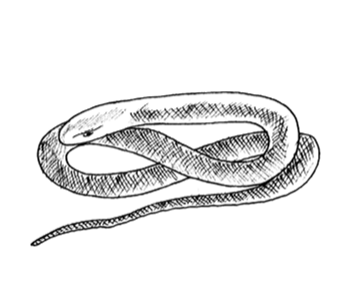
Man
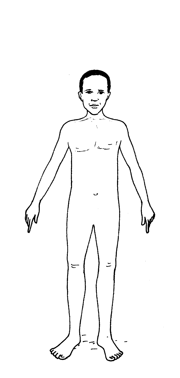
Cow
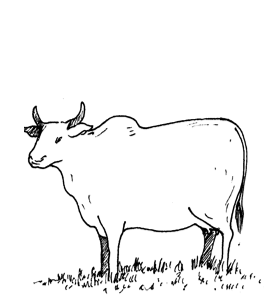
Flagellate bacilli

Mushroom
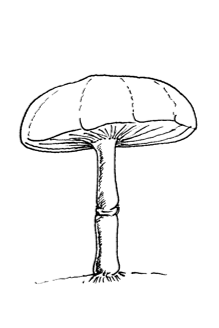
Male fern
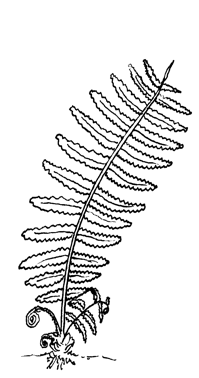
Oak
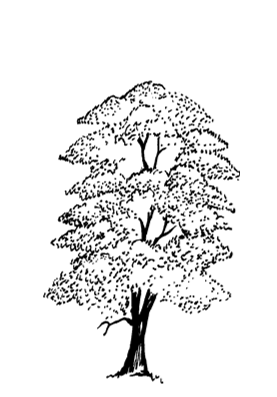
Amoeba
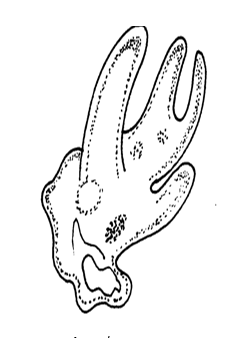
Fucus (bladderwrack)

Dog fish
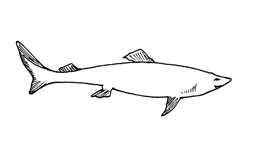
Spider
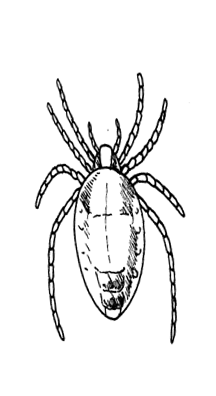
Butterfly
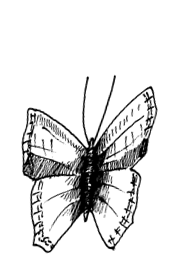
Crab
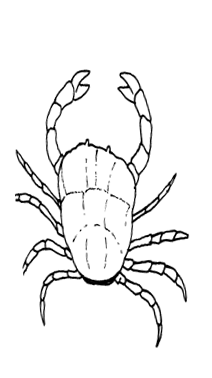
Millipede

Frog

A table of differences between living things and non-living things
| Living things | Non-living things |
| They respire | Do not respire |
| They grow | Do not grow |
| They respond to stimuli | Do not respond to stimuli |
| They reproduce | Do not reproduce |
| They excrete | Do not excrete |
| They feed | Do not feed |
| They move | Do not move |
Branches of biology
Biology is a subject and it has many branches. The main branches are botany and zoology Botany is a branch of biology which deals with the study of plants. A person who studies botany is called a botanist Zoology is a branch of biology which deals with the study of animals. A person who studies zoology is called a Zoologist
Other branches of biology
Mycology: this is the study of fungi. A person who studies mycology is called a mycologist
Bacteriology: this is the study of bacteria. A person who studies bacteriology is called a bacteriologist.
Virology: this branch of biology deals with the study of viruses. A person who studies virology is called a virologist.
Immunology: is concerned with body defense against diseases and foreign substances. A person who studies immunology is called an immunologist.
Entomology: refers to the study of insects A person who studies entomology is called an entomologist.
Parasitology: this branch deals with study of parasites and their effects on living organisms. A person who studies parasitology is called a parasitologist.
Dermatology: It is concerned with medical study of skin and its diseases. A person who studies dermatology is called a dermatologist
Ecology: Is a branch of biology that deals with relationship among living things and between organisms and their surroundings. A person who studies ecology is called an ecologist
Anatomy: Is the study which deals with structure of living things. A person who studies anatomy is called anatomist
Diagram representing branches of Biology
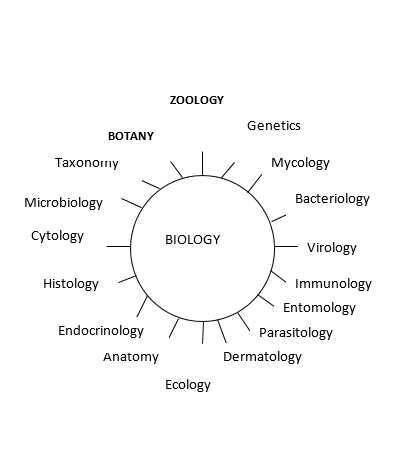
Endocrinology: This is the study of structure of endocrine glands and the hormones associated by them. A person who studies endocrinology is called an endocrinologist.
Histology: Is the study of structure of tissues A person who studies histology is called an histologist
Cytology: Is the study of structure, composition and function of cells. A person who studies cytology is called a cytologist.
Microbiology: Is devoted to the study of organisms that can be seen only with a microscope e.g. bacteria, viruses, some fungi and some protoctists. A person who studies microbiology is called a microbiologist.
Taxonomy: Is the scientific classification of organisms. A person who studies taxonomy is called a taxonomist.
Genetics: Study of heredity and variation in organisms. A person who studies genetics is called geneticist.
The Importance of Studying Biology
Explain the importance of studying biology
The study of biology is very important to man.
The following is an outlines of why the study of biology is important:
- It helps us to understand ourselves better since we are living things.
- Skills and knowledge of biology can be applied to other scientific fields such as agriculture, forestry medicine, nutrition, pharmacy and veterinary science.
- It helps us to understand our environment better and principles of conserving it.
- Biology helps to answer some important questions such as, what do living things need, why do we resemble with a monkey, why do frogs lay many eggs but only few become adults?
- Knowledge of biology helps us to improve our health since causes, symptoms, transmission and treatment are of various diseases are studied in biology.
- Knowledge of biology helps us to avoid our selves from magical beliefs, superstitions and other traditional taboos.
- Knowledge of genetics helps us to clear some common doubts about certain inherited characteristics e.g. albinism, sickle cell anaemia, haemophilia, etc.
- Knowledge of the structure and chemical composition of the organisms enable us to acquire food, clothes and shelter from them.
Relationship between Biological Science with other Related Fields
Relate biological science with other related fields
Veterinary science (Veterinary medicine)
Veterinary medicine is the branch of medicine that deals with the diseases of animals. Doctors that treat animals are called Veterinarians. Veterinarians are trained to prevent, diagnose and treat illness in large and small animals. Their work is valuable because many animal diseases can be transmitted to human beings e.g. rabies, tuberculosis, tularemia (rabbit fever) anthrax etc. Basic knowledge of biology is required for successful study of veterinary science.
Agriculture
Agriculture is concerned with production of useful plants and animals through farming system. Agriculture provides us with almost all our food. It provides materials for clothing and shelter. It provides materials used for making many industrial products such as paints and medicines. Agriculture uses knowledge of biology to improve plant and animal breeding. Genetically modified organisms (GMOs) ensure better quality, early maturity and high yield products. Crop and animal diseases and pests can only be overcome by applying biological knowledge.
Forestry
A forest is a large area of land covered with trees. It is much more than just trees. It also includes smaller plants such as mosses, shrubs and wild flowers. Forestry is the science of managing forest resources for human benefit. The practice of forestry helps maintain an adequate supply of timber and management of such valuable forest resources such as water, wildlife, grazing areas and recreational areas.
Biology helps in improving the qualities of the trees through manipulating the genetic constitution of the particular plant species.
Climate, soil and water determine the type of plants to be grown which entirely applies biological knowledge. Use of biological control to combat tree pests applies biological principles.
Pharmacy
Pharmacy is the profession concerned with the preparation, distribution and use of drugs. Members of this profession are called pharmacists or druggists. Pharmacy also refers to a place where drugs are prepared or sold The drugs are made depending on the chemical composition of the body of an organism and how they can react with such medicines. Knowledge of biology also helps to know the effects of drugs on living things (pharmacology) and possible remedies to be taken.
Medicine
Medicine is the science and art of preserving health and treating illness. Medicine is a science because it is based on knowledge gained through careful study and experimentation. It is an art because its success depends on how skilfully medical practitioners apply their knowledge in dealing with patients. The goal of medicine include saving lives, relieving suffering and maintaining the dignity of sick people. Biological knowledge helps the doctors, surgeons and nurses to diagnose, treat and prescribe the right medicine to cure the disease.
Biological knowledge will also help them to offer education to the patients on how to prevent themselves from the diseases e.g. purifying drinking water, vaccination against polio, measles and other diseases.
Nutrition
Nutrition is the science which deals with food and how the body uses it. People, like all living things need food to live. Food provides substances that the body needs to build and repair its tissues and to regulate its organs and systems. Food also supplies energy for every action we perform. Knowledge of biology helps to identify the type of food required by an individual based on its quality and quantity.
A table showing differences between plants and animals
| PLANTS | ANIMALS |
| (i)They are autotrophic, i.e. they can make their own food | They are heterotrophic i.e. they feed on complex organic compounds |
| (ii)Contain chlorophyll, can undergo photosynthesis. | No chlorophyll, cannot undergo photosynthesis |
| (iii)Growth occurs in some parts only i.e. root and shoot tips. | Growth occurs in all parts of the body. |
| (iv)They have branched bodies | They have compact bodies |
| (v)No nerves, muscles, blood system or special sensory cells. | Have nerves, muscles, blood system and special sensory cells. |
| (vi)Usually rooted in the ground and do not move from place to place. | Not rooted in the ground, move to get food and escape enemies. |
| (vii)Have no digestive system | Have digestive system needed to break down food |
| (viii)Cells of plants have cell walls | Cells of animals have no cell walls |
Activity 1
Living and non-living things
Aim: to explore living and non-living things around the school
Procedure:Go around the school surroundings. Identify varieties of living and non living things you see.
Make a list of living and non – living things in a tabular form as shown below.
| List of living things | List of non-living things |
Exercise 1
Self test questions
1. Biology is derived from two Greek words namely,
- Logos and Lagos
- Logos and phyla
- Bios and logos
- Bios and phyla
2. The following are characteristics of living things except
- Nutrition
- Reproduction
- Growth
- Dancing
3. A branch of biology which deals with the study of plants is called
- Botany
- Dermatology
- Ecology
- Zoology
4. A person who studies zoology is called
- Botanist
- Virologist
- Zoologist
- Ecologist
5. All of the following are living things except
- Bean plant
- Sand
- Lizard
- Rat
6. Which of the following is the most important basic difference between plants and animals?
- Growth
- Reproduction
- Nutrition
- Movement
7. Which of the following is out of place?
- Excretion
- Virology
- Endocrinology
- Zoology
8. The following is the best description about irritability
- Removal of waste products
- Ability to move from one place to another
- Increase in size of an organism
- Ability to respond to environmental changes
9. The picture below best represents
- Reproduction
- Movement
- Nutrition
- Sensitivity
Picture

10. A person picks up a telephone after hearing it ringing. Which characteristics of living things is the person showing by this action?
- Excretion and reproduction
- Respiration and nutrition
- Irritability and movement
- Respiration and growth
11. For each of the following write TRUE if the statement is true and FALSE if the statement is not true.
- Biology is a branch of science which deals with the study of living things__________________
- Dancing is one of the characteristics of living things _________________
- A person who studies ecology is called mycologist _________________
- Knowledge of biology can help us to improve our health ________________
- Living things normally increase in size. The process of increasing in size is called growth ________________
12 (a). What do you understand by the following terms?
- Biology
- Cell
- Bacteriology
(b) List down seven (7) characteristics of living things.
13. Give seven differences between living things and non living things.
- Outline the importance of studying biology
- Why are a mosquito and a dog considered to be living things?
14. Give four differences between plants and animals.
- A motor car moves from place to place, obtains energy by combining petrol with oxygen and produces waste gases. Does this mean cars are alive? Look through the seven features, of living things and list those which do not apply to cars.
15. (a) What do you understand by the following terms?
- Pharmacy
- Forestry
- Veterinary medicine.
(b) State how biology is related to the following science fields
- Pharmacy
- Veterinary medicine
- Agriculture
- Forestry
- Nutrition
- Medicine
Subscribe to:
Post Comments
(
Atom
)




No comments :
Post a Comment